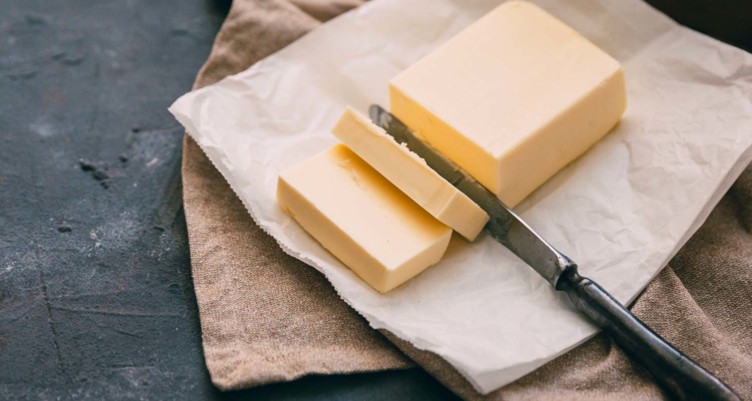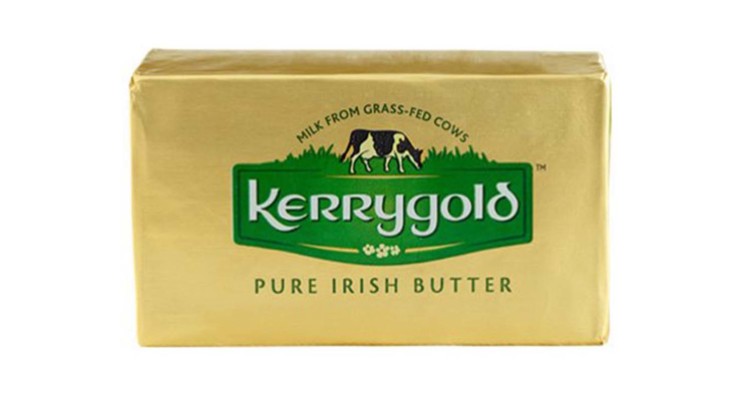Health Benefits of Grass-Fed Butter: Why It’s Good for You

It’s the news you’ve been waiting for: everything’s better with butter, even your health. There’s a reason it’s in Bulletproof Coffee. Grass-fed butter and ghee are staples in the Bulletproof Diet, and packed with powerful nutrients and rich fats.
But not all butter is created equal: just like grass-fed beef, grass-fed butter is a completely upgraded food. Read on to learn how these golden bars of grass-fed goodness can boost your health while adding flavor to every meal.
Grass-fed butter vs. regular butter
When cows are pastured on their natural diet of grass, they produce milk with more healthy fats and fat-soluble vitamins, a better omega-3 to omega-6 ratio, and fewer toxins. Buying grass-fed dairy also supports more sustainable farming. If you want the best fuel for your body, organic, grass-fed butter is the real deal.
In contrast, when dairy cows eat grains, they become sick, malnourished, and weak. This means butter with fewer nutrients, more omega-6, and traces of the added hormones and antibiotics used to keep the sick animals alive. Grain-fed dairy is also more likely to contain mold and toxins from moldy grains used as feed. These mold toxins accumulate in the animal’s milk, although less is present in butter.[1]
Organic, grass-fed ghee is another way to reap the benefits of butter, especially if you are lactose-intolerant or have trouble digesting dairy. Ghee is pure butterfat, so grass-fed ghee will have all the benefits mentioned above, with less of the casein and lactose that irritate some people. Ghee also has a higher smoke point, making it ideal for high-temperature cooking.
Health benefits of grass-fed butter
 Rich source of CLA: Grass-fed butter contains five times more conjugated linoleic acid (CLA) than butter from grain-fed cows.[2] CLA is a beneficial fatty acid linked to fighting cancer, preventing bone loss, and helping your body build muscle rather than store fat. Its anti-inflammatory properties help it support nearly every system in your body, and provide protection from chronic inflammatory disease.
Rich source of CLA: Grass-fed butter contains five times more conjugated linoleic acid (CLA) than butter from grain-fed cows.[2] CLA is a beneficial fatty acid linked to fighting cancer, preventing bone loss, and helping your body build muscle rather than store fat. Its anti-inflammatory properties help it support nearly every system in your body, and provide protection from chronic inflammatory disease.
Fights inflammation with omega-3
Grass-fed butter also boasts much higher levels of omega-3 fatty acids such as DHA and EPA, compared to butter from grain-fed cows.[3][4] Your body can convert ALA, another type of omega-3, to small amounts of EPA and DHA, but a diet rich in omega-3 EPA and DHA can help you reach optimal levels.
Omega-3s are an integral part of cell membranes throughout your body, and a building block for necessary hormones. Their anti-inflammatory function makes them essential for protecting heart and brain function and controlling inflammatory conditions such as eczema and arthritis.[5] Proper omega-3 levels are also vital for healthy fetal development.[6]
Rich source of butyrate
One of the most magically beneficial compounds in butter is the metabolism-boosting fatty acid butyrate.
In studies using mice, butyrate improved insulin sensitivity, reduced cholesterol and blood sugar, and greatly increased fat burning and mitochondrial activity.[7] Mitochondria power every cell in your body. They turn the foods you eat into cellular energy that keeps your body running. Happy mitochondria are the foundation of the Bulletproof Diet, and help you feel, look, and perform your best.
Butyrate is also linked to reduced inflammation, and supporting the healthy bacteria in your gut.[8]
Protects vision and eye health
The rich, golden-yellow color in grass-fed butter is caused by the high levels of beta-carotene from the cow’s grass-fed diet. A study in the Journal of Dairy Science found that beta-carotene and lutein both increased with the proportion of grazed grass in the dairy cows’ diets.[9] Your body uses beta-carotene to produce vitamin A, which supports vision, bone health, and your immune system, while lutein protects your eyes by filtering blue light and UV. [10]
Where can you buy grass-fed butter?
 Already a staple in health food stores, a rise in popularity is making it easier to find grass-fed butter in chain grocery stores too. Kerrygold Irish Butter is your best bet when looking for grass-fed butter at the supermarket. Stock up at Trader Joe’s, Costco or Aldi’s for some of the best prices.
Already a staple in health food stores, a rise in popularity is making it easier to find grass-fed butter in chain grocery stores too. Kerrygold Irish Butter is your best bet when looking for grass-fed butter at the supermarket. Stock up at Trader Joe’s, Costco or Aldi’s for some of the best prices.
Your local farmers’ market is another great place to check for pasture-raised dairy products. Some farms are only able to support their livestock on pasture-only diets during the summer months, and therefore might only package grass-fed butter during those times. Look for butters labeled as “grass-fed” or “pasture-raised,” and opt for organic when you can.
Like conventional butter, you can find grass-fed butters in different styles. The two you’re likely most familiar with are salted and unsalted. Salted butter is fantastic for adding flavor, while unsalted is best used in recipes where you’re adding salt and spices separately.
You can also find cultured and European-style butters, which may be easier to digest, but do add a tangy flavor from their fermentation.
Lastly, ghee is a form of clarified butter, where the sugars and protein have been separated out. Without these milk solids, ghee is less irritating for dairy-sensitive folk, and safer at high heats.
Learn more about grass-fed butter versus ghee so you can add more healthy fats to your daily diet!
Sign up for early access to sales, product launches, the latest Bulletproof news and more!






